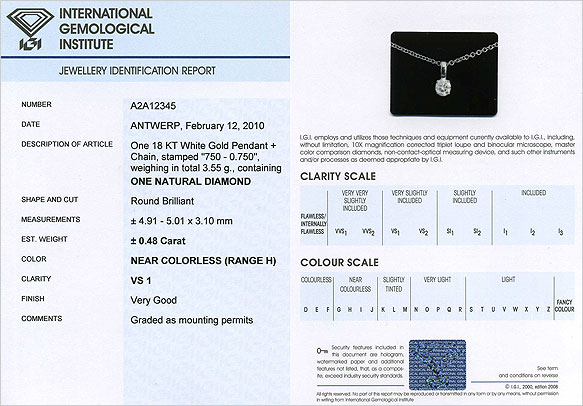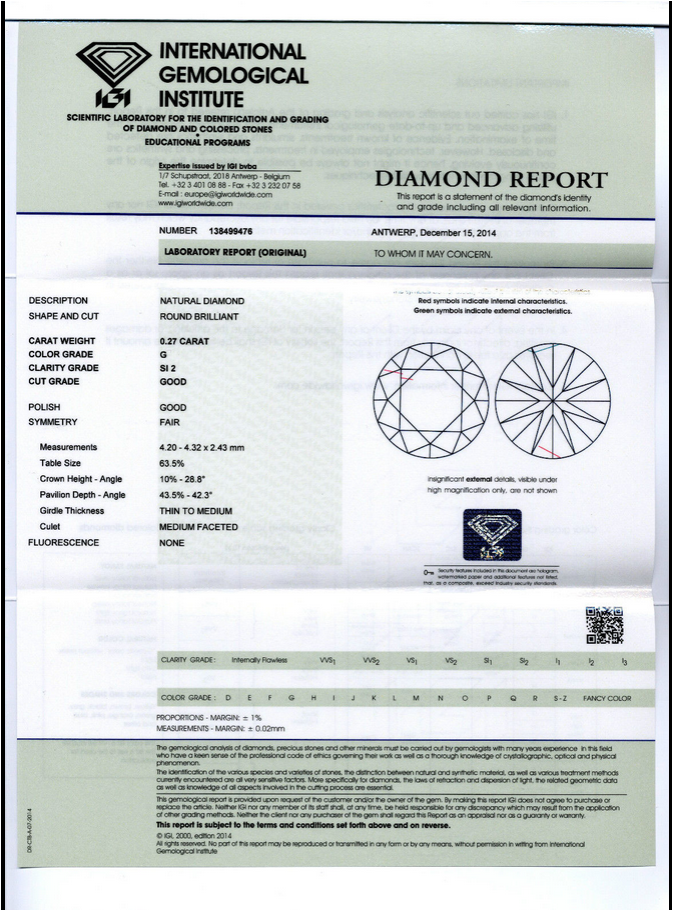


The IGI, an unbiased source for appraisals, provides accurate appraisals and identification reports.Ĭlick here to see samples of the IGI Certificate. In the world of luxury goods, once your brand drops to the 2nd tier, you will never get back to the 1st tier.The IGI certifies completed pieces of diamond jewelry.The IGI is totally independent of all commercial sales organizations and does not trade in diamonds or precious stones. Unfortunately, they degraded their own reputation. I remember IGI used to be everywhere in North America. I don't think that will change in the foreseeable future, regardless of how consistent and accurate IGI actually is today. IGI is still considered as a 2nd tier lab and GIA/AGS stones are traded at a higher premium. US consumers' perception on IGI diamonds and IGI diamonds' pricing in comparison with GIA/AGS diamonds have not changed for the last 15~20 years. If you are a cutter and have a well cut stone, why would you not use GIA/AGS to grade and market your stone, and lose potential profit by going with IGI or other labs? Just to tackle India/China/Hong Kong markets, and ignore North America market? It does not make too much sense to me. basically wrote the exact same thing here he did in 2014.Īs a consumer, I always ask this question. GIA rules) and their grading is consistent. Many experts say IGI is a 2nd tier lab, while others say it is a well respected in some Asian countries (not in South Korea. The reports can be all over the place, but the underlying value adjustments are there with or without reports. When the prices agree, the diamonds tend to make sense of it all. Does it really matter? It is a mind issue, not a physical issue of diamond grade for the most part.
#IGI CERTIFICATION FULL#
If you select an IGI report diamond at your full budget level with grading higher than you might get with GIA, you likely will get a similar diamond from either lab for similar money, but the grading on the two reports may not necessarily agree. However, the conviction of accuracy is not as strong as with GIA, so while reliable, there are lingering doubts.Īs a consumer you should set your budget and look at diamonds within your budget without a great deal of regard for which lab, "A" or "B" did the grading. The grades may be a bit weaker, but not always. That's the why there is some discounting. From our smaller, US perspective, IGI appears on the "B" chart. IGI from a world view is an "A" firm from size, professionalism and their large teaching role. In the USA, IGI is huge and widely used by mass marketing retailers. Overseas, in places such as India, IGI is highly recognized and very accepted. It might be perfectly well graded, but history shows that "B" level labs may not be exactly where "A" level labs are when it comes to grading. This attitude leads to discounting to help encourage dealers to consider the diamond. When you have a diamond graded by a lab that is not on the "A" list, a dealer may not even bother to consider buying it just for the lack of convenience and the wasted shipping costs. Labs don't change anything, but the most well recognized labs provide reasonably consistent grading and which vastly increase the ability of dealers and consumers to trade the bulk of diamonds nearly sight unseen with a good level of confidence. JOIN OUR FORUMĭiamonds are really valued by color, clarity, weight, shape outline, and the all important quality of their cut, light return, and beauty.

Ask our PriceScope members and industry experts for a second opinion or get lost in the thousands of user-shared diamond and jewelry images for inspiration.


 0 kommentar(er)
0 kommentar(er)
